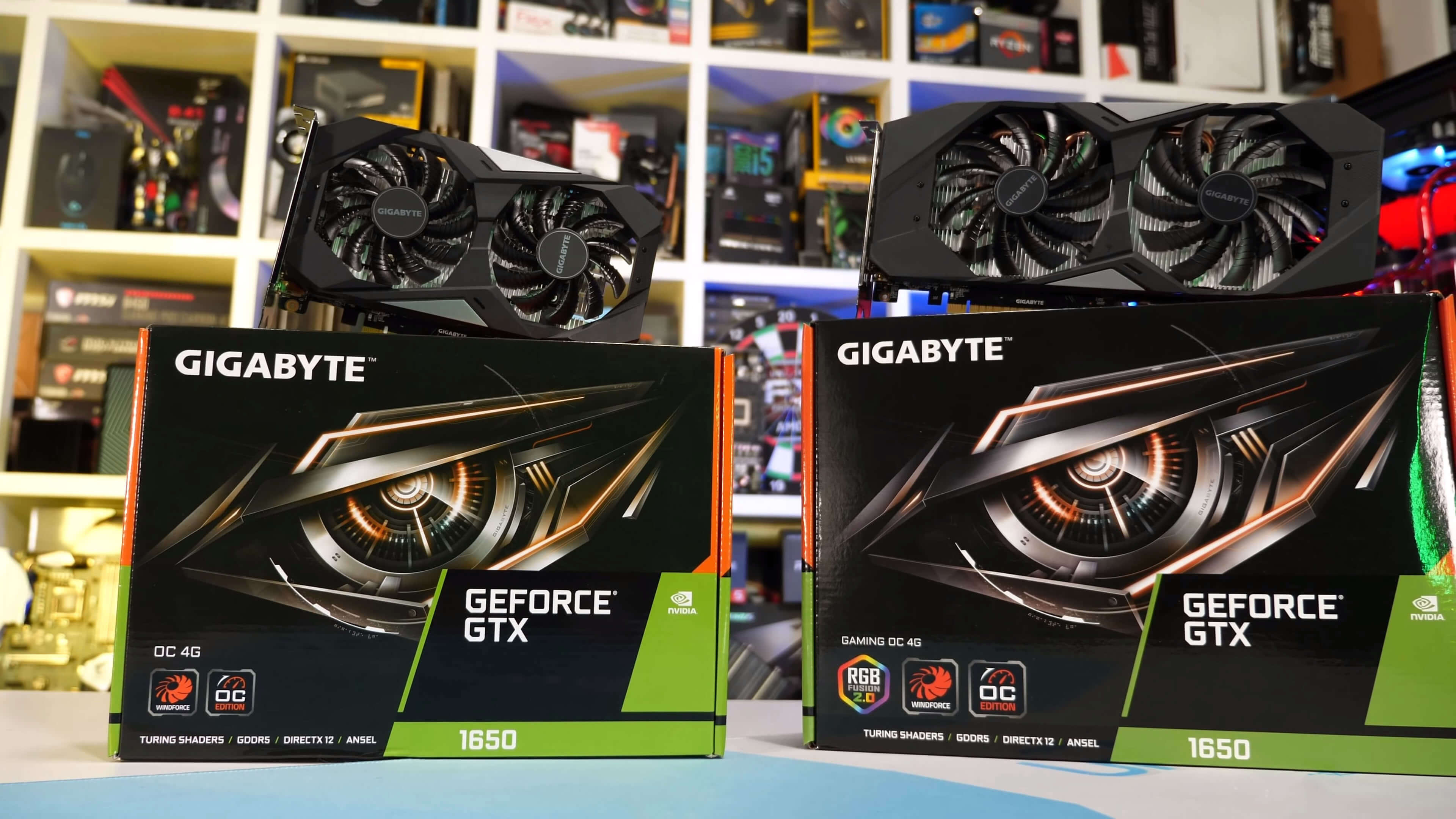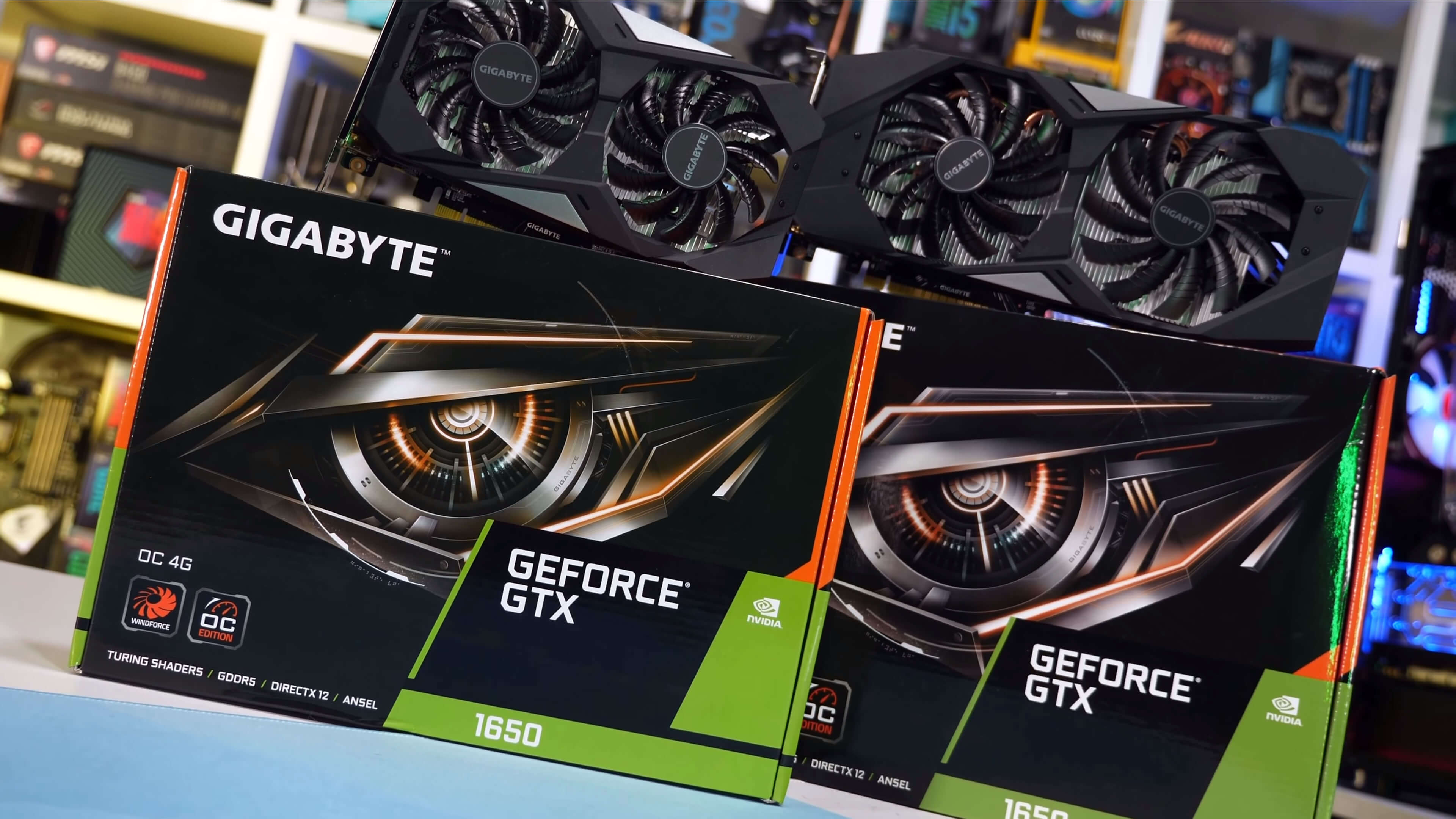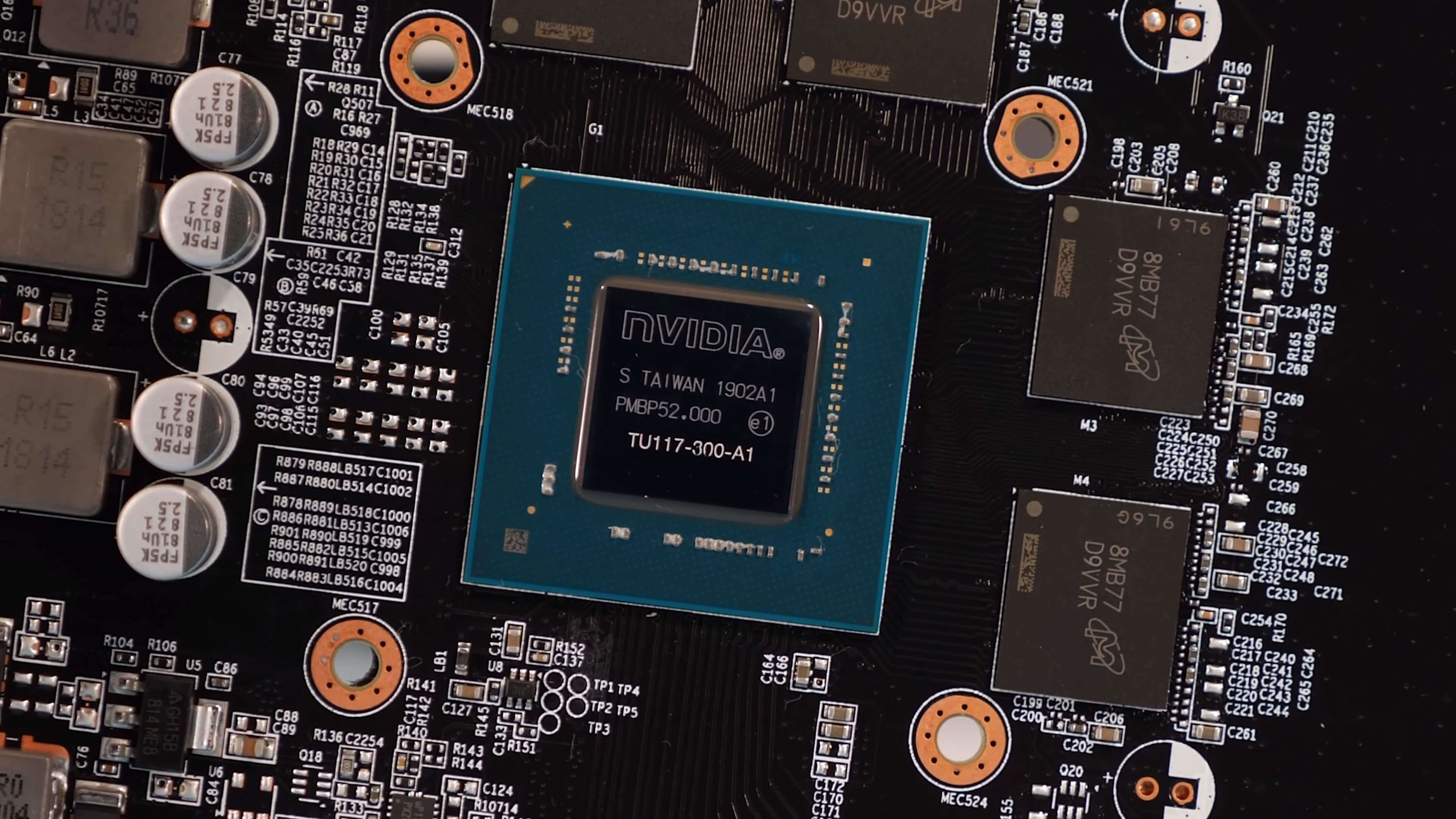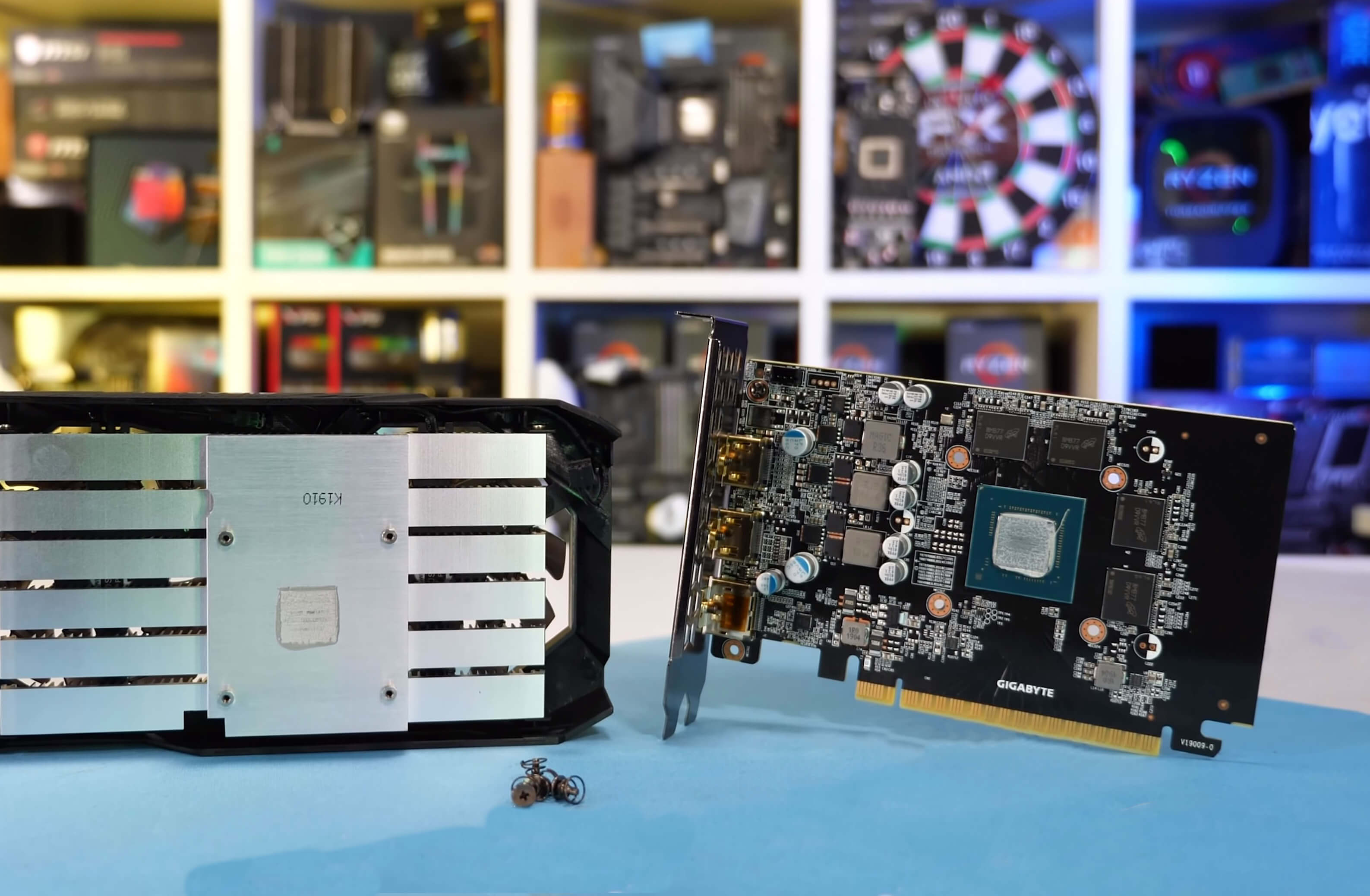Last week we checked out the new GeForce GTX 1650 for the first time and we were disappointed with what we found. For some time now AMD's Radeon RX 570 has been, or at least should have been, the go-to option for budget conscious gamers. It obliterates the GTX 1050 Ti and it's been cheaper to buy ever since cryptocurrency mining cooled off.
The Radeon RX 570 is a great value gaming graphics card, but as great as it is, we were hoping we'd evenly get a Turing based GPU that was even better. That didn't come to happen though, as the GTX 1650 struggles to match the value of even the faster RX 580.
The only possible advantage the GTX 1650 has is its power efficiency. Using less power means cooler and quieter graphics cards, or at least it potentially can. The opposite can also happen, where AIB partners try to maximize profit and slap a crushed down coke can on the thing and it will run at 70 degrees.
With that said, the handful of GTX 1650 cards we've seen so far run cool and quiet despite their unimpressive looking coolers. The other advantage to not using much power is the GTX 1650 can be configured to not use any external power. The models we reviewed before provided by MSI and Gigabyte did require the external 6-pin power connector, placing them in direct competition with something like the cheaper and faster Radeon RX 570.
We've since purchased the Gigabyte GTX 1650 OC, a 195mm-long graphics card that weighs all of 377 grams and most crucially, has no external power connector. For context, the Gigabyte Gaming OC version we used in our original review is 36% longer and 76% heavier.
In terms of pricing, the smaller version without the 6-pin PCIe power connector costs $155, so a mere $5 over the MSRP. The Gaming OC version in the other hand is retailing for $180, so it's 16% more expensive. Out of the box the base model targets a boost clock speed of 1710 MHz, while the bigger version aims for 1815 MHz. When gaming the base model typically boosted to 1830 MHz, while the 6-pin model hit 1950 MHz.
Because the base model is limited to the 75-watt power delivery of the PCI Express x16 slot it can't clock higher as it would be running out of spec and doing so could risk damaging the motherboard. Therefore out of the box we saw a peak GPU load of 67 watts whereas the Gaming OC model hit 72 watts.
Given those limitations overclocking the base model isn't possible. The card's power limit is locked at 100% and at most we were able to squeeze another 15 MHz out of the core. Even that was a bit iffy though, pushing the GPU load to 69 watts. However, we quickly discovered that the GTX 1650 is extremely memory bound, so if you spend the small power budget available on the 75 watt model by overclocking the 4GB of GDDR5 memory, this leads to more substantial gains. We were able to boost the memory frequency by 17% and as you're about to see that lead to some fairly impressive performance gains.
As expected, the cards that could pull more power from the PSU overclocked better and we'll look at those results in a moment. Once overclocked the Gigabyte GTX 1650 Gaming OC peaked at 91 watts and averaged an operating frequency of 2070 MHz which was quite impressive. For testing we have just a few games running in our usual GPU test bed that includes a Core i9-9900K clocked at 5 GHz with 32GB of DDR4-3200 memory.
Benchmarks
First up we have World War Z and here out of the box performance between the two Gigabyte GTX 1650 models is basically identical which might seem a bit odd given the 6-pin model is clocked 6-7% higher. However, as mentioned earlier the GTX 1650 is very memory bound, so much so that you have to underclock the core heavily before you see a noticeable decline in performance.
Leaving the core frequency untouched but boosting the GDDR5 memory frequency by 18% improved frame rates in World War Z by 7%, not an amazing overclock from the base model but if I tried to overclock the cores it was a 1-2% increase at best. The 6-pin model supported core and memory overclocking and the memory went a little further, this saw a 12% boost in performance, placing the GTX 1650 just behind a stock GTX 1060 3GB.
Not exactly an impressive result but this is about the best you can hope for from a GTX 1650 in World War Z.

Performance gains when testing with Far Cry New Dawn were similar, the base model was 7% faster once overclocked while the 6-pin model was 14% faster. Another nice performance uplift for the 6-pin model but even so it was still slower than a stock 3GB 1060 and much slower than the stock Radeon RX 570.

We know Forza Horizon 4 to be quite the memory sensitive title and therefore we weren't overly surprised to see the memory overclock on the base model providing a 13% performance boost which was comparable to the 15% boost the 6-pin model enjoyed.
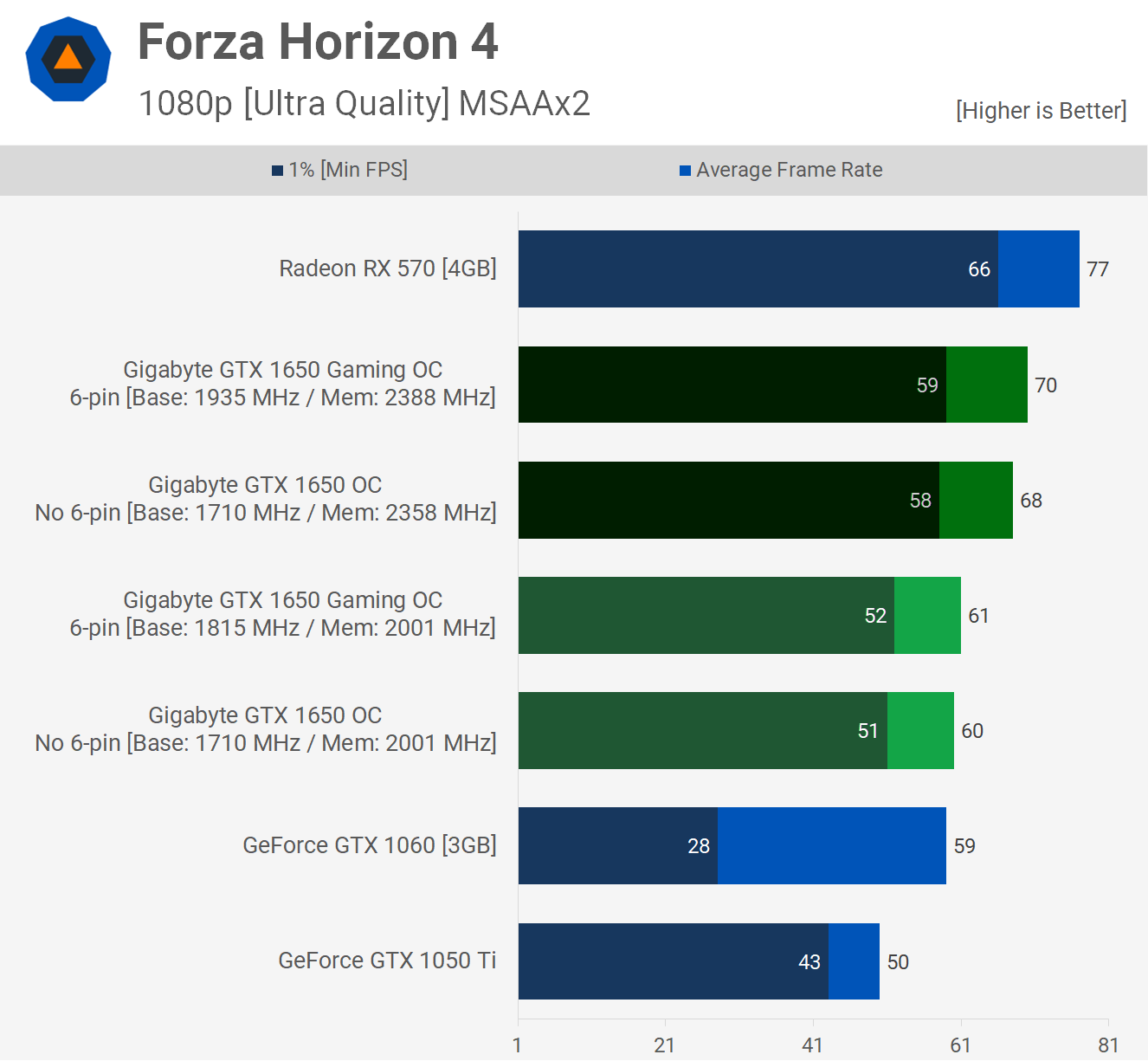
Gains seen in Fortnite are reminiscent of what we saw in World War Z and Far Cry New Dawn, an 8% boost for the base model and 13% for the 6-pin version.

Then finally we have Resident Evil 2 and here we see a slight performance advantage out of the box for the 6-pin model and then once overclocked it enjoyed a 17% performance bump, and then 10% for the base model.

Wrap Up
We have to admit we're pleasantly surprised by the 75-watt model lacking an external PCI Express power connector. Overall that still doesn't make it a great card, but we thought it might have been worse than it was. The Gigabyte GTX 1650 OC is the fastest 75-watt model you can get, it's running right on the edge of the limits with no headroom for the cores. Though it is only clocked 3% above the official Nvidia spec, so it's not like the single fan Gigabyte Mini version that's clocked 30 MHz lower will be slower by more than a frame.
The takeaway here is, if you're after a GTX 1650 – let's not get into the reasons – if you're after a GTX 1650 then your best bet is a base model at or as close to the MSRP as you can get. The Gigabyte Gaming OC is a much better graphics card than the base model OC version, but it's not worth paying more that kind of premium.
If we're going strictly by best value and performance, the GTX 1650 series as a whole is a hard pass at the launch's $150 price point because for $20 less you can get an RX 570 which is a faster graphics card. In most modern games often much faster, think 20%. The RX 570 will suck down way more power, which isn't ideal, but a base model RX 570 is still relatively cool and quiet.
If you're a mad scientist that likes to overclock even gaming chairs, then there is more fun to be had with the 6-pin models and you can get them for as little as $160. In an alternative universe where the GTX 1650 was worth buying then these are the models we'd suggest getting.
